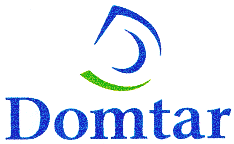The Pig has finally, and belatedly, accumulated the seed money for the WershovenistPig Portfolio.
I established four positions yesterday. The portfolio is diversified in several ways. I used different, and competing investment theories behind the stock picks. There is variety in the market capitalizations and the risks for each of these picks. There's the small-cap speculative growth pick (Poore Brothers - SNAK); the value and spin-off play (Cendant - CD), a momentum/earnings growth choice (Lifecell - LIFC), and a high-dividend-yielding energy stock (Enbridge Energy LP - EEP).
Let's take a quick look at each of the stocks, my reasoning and justification for the purchase, and my outlook for either maintaining or selling the position. If you want some more background, just search the Pig archive.

SNAK - Position established at $2.65/share. Stock recently tanked, bottoming out in December after some lowered earnings, earnings restatements, and a brief tenure with the ticker SNAKE. Now with a new interim CEO, a PEG of 0.39, and a license to produce and market some tasty-looking Cinnabon shelf-stable cookie products, I thought it was time to plunge into owning this speculative small-cap.
Outlook: I'm looking for some significant upward movement in the next six months, perhaps when the next quarter's earnings are announced. If SNAK gets into the $5-6 range, I will probably shrink the position.

CD - Position established at $16.00/share. Beginning this spring, Cendant is spinning off some of its diverse array of holdings and abandoning its sullied moniker. This move should simplify the company, making it easier for investors to understand, and hopefully unlocking significant shareholder value. Morningstar gives CD five stars, and gives a fair value estimate of $23.00.
Outlook: I may add to this position in the near term if CD continues to drop in price. As a value play, I'm looking at a long-term hold.

LIFC - Position established at $22.30/share. Yes, I first looked into this stock back when it was trading at $18/share. I liked it then, as did those CANSLIM-lovers at IBD. I like it now, even though Cramer boosted the stock on Mad Money last week. Here's the 2/2 Mad Money recap re LIFC:
The Skin He's In
"When I go hunting for stocks ... I look for jaw droppingly good earnings," Jim Cramer told "Mad Money" viewers Thursday, which is why he said to take a look at LifeCell (LIFC:Nasdaq - news - research - Cramer's Take).
The company makes artificial skin to repair the body and reduce scarring after complex hernia procedures, he said. While this doesn't sound like the most attractive business, Cramer said that LifeCell has very little competition.
And, he added, the competitors are using pigskin.
With 133,000 complex hernia procedures a year, Cramer sees room for growth. Plus, he said, the company could expand into the breast implant market to reduce scarring in these cosmetic procedures.
The company says it will see more than 30% sales growth a year, a number Cramer said is probably radically conservative, and better than any company he follows.
A caller wanted to know if the company was exposed to litigation risks. Cramer said that like all medical stocks, the company would have to deal with lawsuits and the threat of lawsuits.
However, Cramer said it would be no more of a concern for LifeCell than for other companies in the sector and that it would not dissuade him from buying the stock.Outlook: I'm looking for the big move, and will be patient in the meantime.

EEP - Position established at $45.75/share. I picked this Morningstar three-star-rated pipeline partnership while seeking out a solid energy stock that has not surged to a toppy top of the stock charts. Unlike the Fort McMoney watch list stocks, EEP has a share price
below
its fair value estimate. Currently $7, or 20% below. Speaking of percentages, the 8% yield caught my attention. Lucky for me, I bought just in time to qualify for the upcoming dividend distribution. EEP also allows me to capitalize on the potential of the Alberta oil sands without as much risk as high-priced stocks like Suncor.
Since I have not written about EEP before, here's a very brief excerpt from a recent Morningstar analyst report:
[T]he largest portion of Enbridge Energy LP's operating profit still comes from one very large pipeline system, Lakehead. This massive system delivers 1.4 million barrels a day from the fields of Alberta to the U.S. Midwest and Northeast. Lakehead owns an impressive share of its market, with about three fourths of the crude transport capacity coming out of western Canada. Enbridge Energy LP owns the U.S. portion of this system, while its general partner, Enbridge ENB, owns the Canadian side.Outlook: The attractive dividend and cash flow could keep me holding EEP longer than I originally envisioned. Of course, I will be keeping track of the price and demand for oil, and react accordingly.











